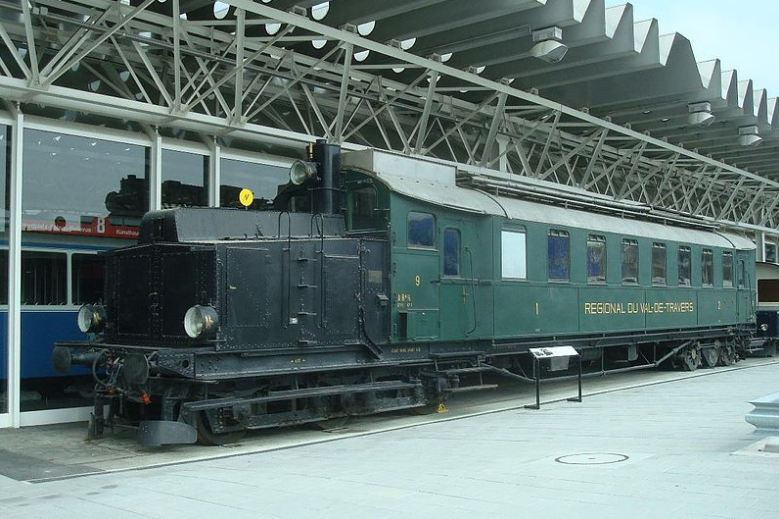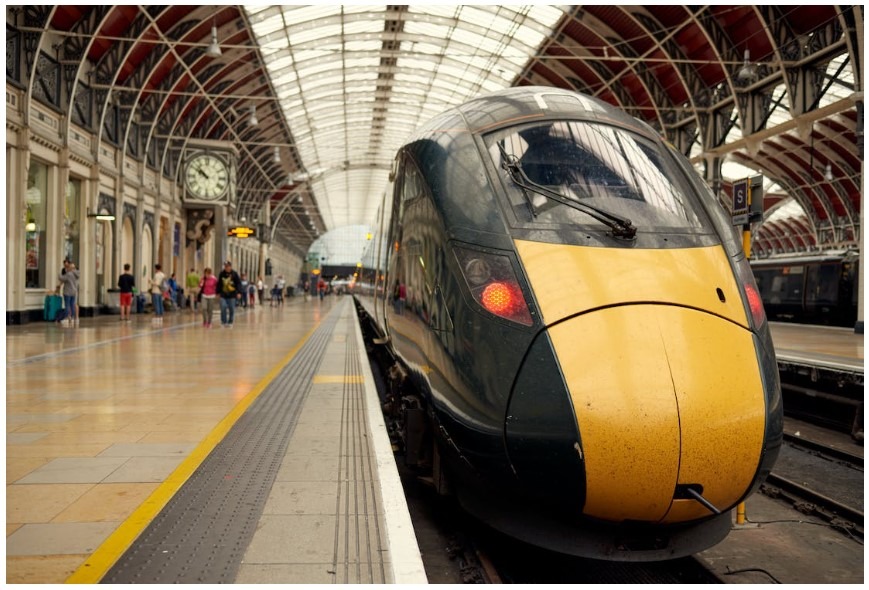When Was the Train Invented?
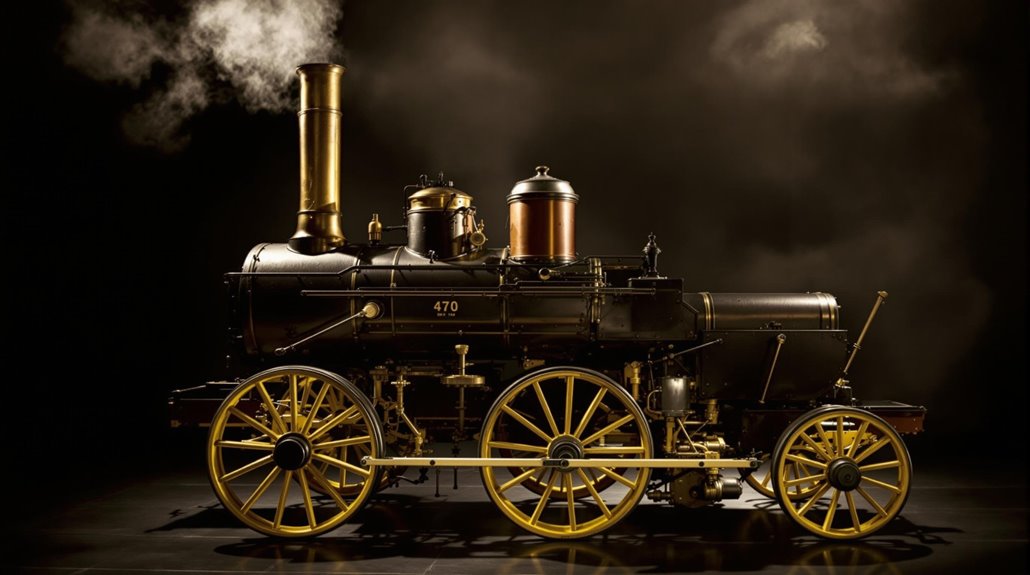
While you might think trains started with steam power in 1804, ancient civilizations were using railway-like systems thousands of years earlier. The Post Track in England's Somerset Levels dates back to 3838 BCE, and the Greeks built the impressive Diolkos trackway around 600 BCE. Modern trains truly began when Richard Trevithick invented the first steam locomotive in Wales in 1804. The evolution from these early beginnings to today's high-speed railways reveals an fascinating expedition of innovation.
Ancient Railway Systems and Early Trackways
While modern trains are a relatively recent invention, the concept of dedicated trackways for transportation dates back thousands of years. One of the earliest examples you'll find is the Post Track in the Somerset Levels, England, constructed around 3838 BCE.
In ancient times, the most sophisticated early trackway was the Diolkos in Greece, built around 600 BCE. This impressive paved trackway stretched 6 to 8.5 kilometers across the Isthmus of Corinth, featuring limestone grooves designed for wheels. The Greeks used it to transport boats across land, and it remained operational for over 650 years, until at least the 1st century CE.
The concept of constructed trackways continued to evolve, with similar systems later appearing in Roman Egypt, showing how ancient civilizations recognized the value of dedicated transportation routes. These early innovations laid the foundation for later developments like the Granite Railway, America's first chartered railroad used specifically for transporting granite.
The Dawn of Steam Power: 1804 and Beyond
The true birth of modern trains emerged in 1804 when Richard Trevithick introduced his pioneering steam locomotive in Wales. This novel invention launched the era of steam-powered rail transportation, forever changing how you'd travel and transport goods.
Throughout the 19th and early 20th centuries, railway technology evolved rapidly. Steam locomotives became increasingly powerful and efficient, with notable models like the American Type, Cab Forward, and Big Boy altering rail capabilities. You'd find early locomotives running on wood, coal, and oil until Sweden introduced the first diesel engines in 1913, followed by the United States in 1939.
The industry's progress culminated in 1958 with Union Pacific's X-1 Super Turbine, the world's most powerful locomotive. Today's railways continue to advance with modern diesel, electric, and battery-powered engines, offering cleaner and more efficient transportation solutions. Bullet trains have revolutionized rail travel by utilizing magnetic levitation to achieve speeds over 400 miles per hour.
Key Locomotive Innovations Through the Ages
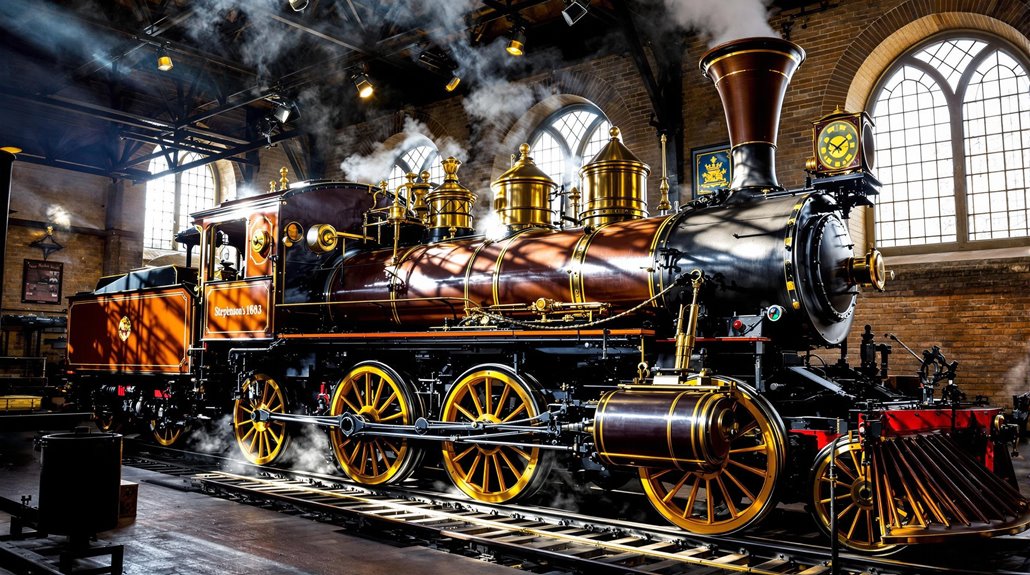
Since the dawn of rail travel, locomotive innovations have revolutionized transportation through a series of trailblazing developments. You can trace this evolution from the first steam-powered locomotive in Wales in 1804, which transformed how railways operate.
The introduction of American Type locomotives in 1868 marked another milestone in steam power advancement.
When diesel engines emerged in Sweden in 1913, they began reshaping rail transport, eventually surpassing steam locomotives in efficiency. Notable achievements include the powerful Cab Forward AC-7 of 1905 and the legendary Big Boy of 1941.
The UP X-1 Super Turbine of 1958 showcased unparalleled power, while modern innovations like the SD70-AH-16 Tier 4 continue pushing boundaries. Today, you'll find the industry exploring battery-electric locomotives, marking yet another chapter in railway evolution.
The development of multi-tubular boilers in the 19th century significantly improved steam locomotive efficiency and power output.
The Rise of Modern Train Technologies
Modern train technologies surged forward in the late 19th century as electric and diesel-powered engines began replacing traditional steam locomotives. You'll find that these innovations dramatically improved both efficiency and operating speeds while reducing maintenance needs compared to steam-powered predecessors.
Today's rail technology has evolved far beyond those early advancements. You can now travel on high-speed trains exceeding 300 mph in many countries, thanks to breakthrough developments in signaling systems, track electrification, and advanced materials.
Modern locomotives aren't just faster - they're also more environmentally friendly, with improved fuel efficiency and reduced emissions compared to other transportation modes.
The innovation continues as researchers investigate new frontiers in train technology, including promising experiments with battery-electric and hydrogen-powered locomotives that may shape the future of long-distance rail travel.
Railways and Environmental Impact: A Sustainable Future
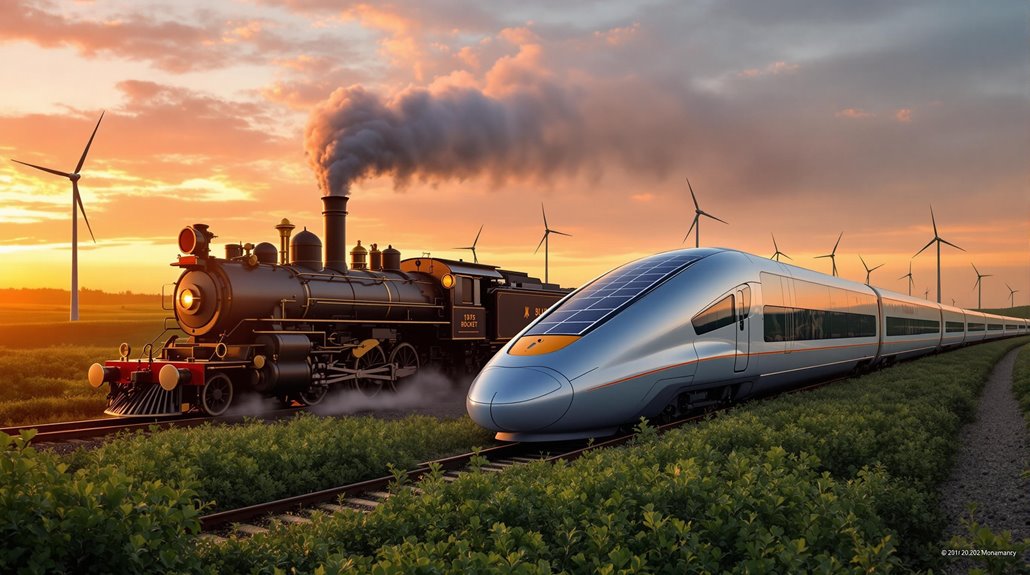
As rail technology advances, environmental benefits have emerged as a persuasive reason to choose trains over other transportation methods. While the rail industry has evolved from steam-powered railway to diesel-powered locomotives, it's become increasingly clear that freight rail plays an essential role in reducing our environmental impact.
Trains are remarkably efficient: they can move one ton of freight about 500 miles on a single gallon of fuel, making them 3-4 times more fuel-efficient than trucks. If you're considering your shipping needs, switching just 10% of truck freight to rail would save 1.5 billion gallons of fuel annually - equivalent to planting 400 million trees. Companies like Union Pacific demonstrate this impact, as their customers eliminated 22.9 million metric tons of greenhouse gas emissions in 2021 by choosing rail over trucks.


